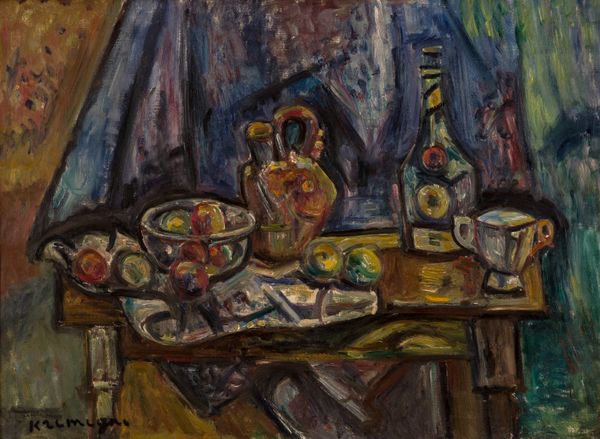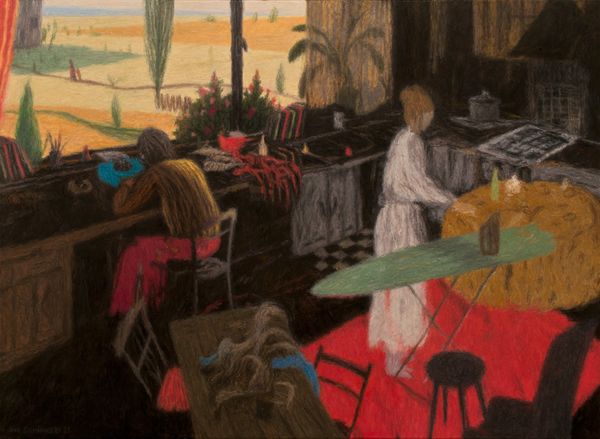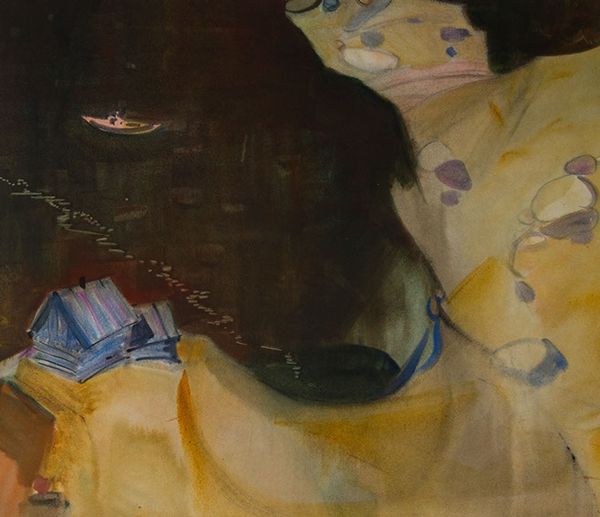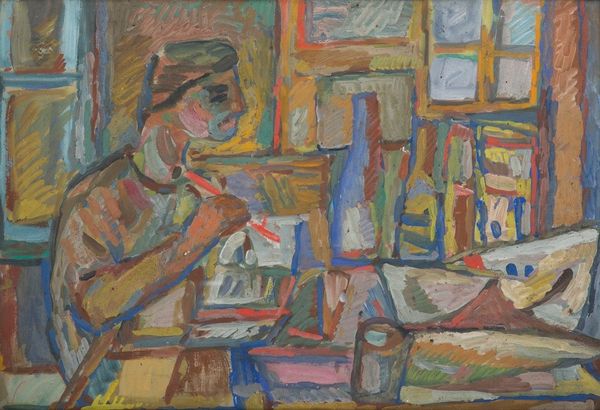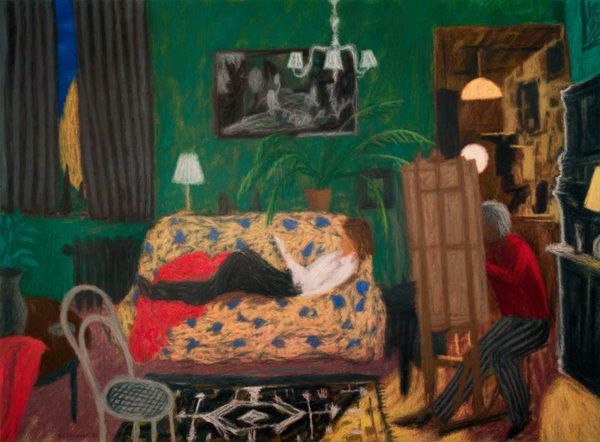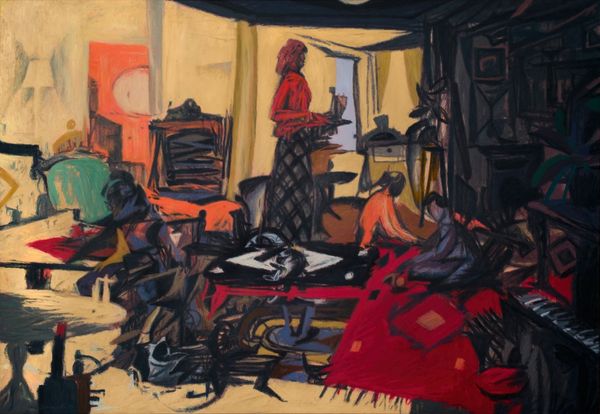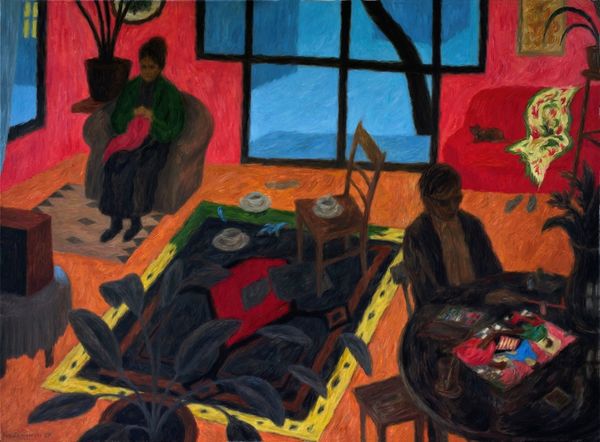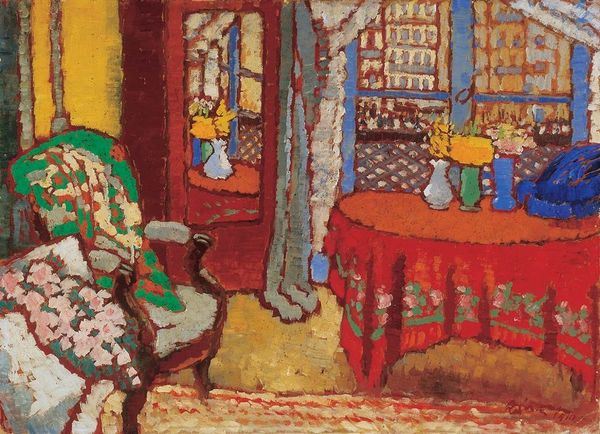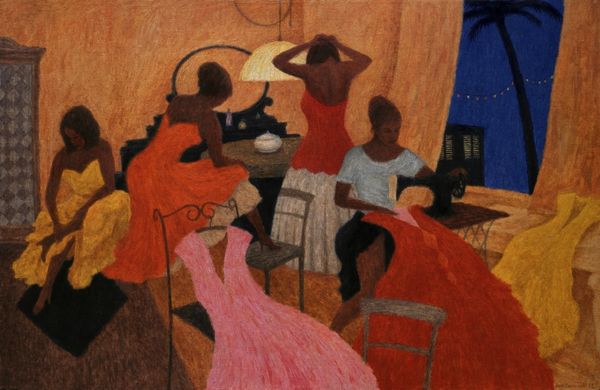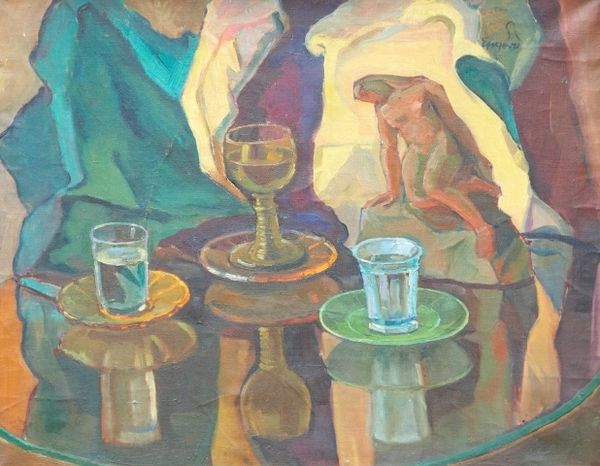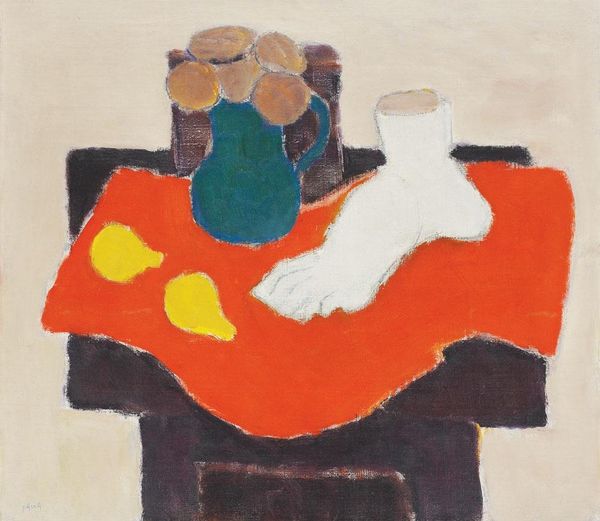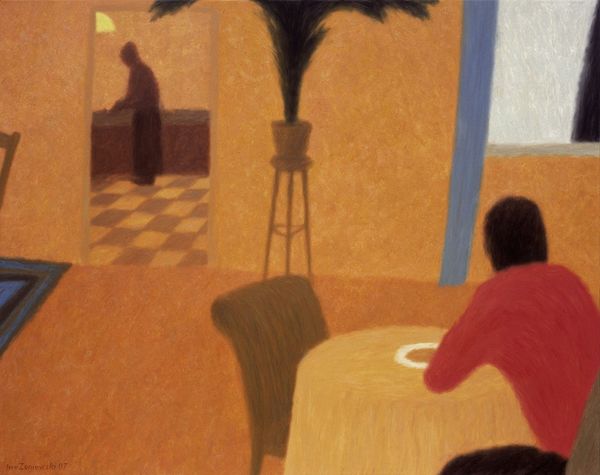
Dimensions: support: 730 x 1064 mm frame: 948 x 1282 x 95 mm
Copyright: © ADAGP, Paris and DACS, London 2014 | CC-BY-NC-ND 4.0 DEED, Photo: Tate
Curator: This is Pierre Bonnard's painting, "Coffee," held here at the Tate. Editor: It feels like an invitation—a sun-drenched, intimate space. The red and white checks overwhelm the senses! Curator: Bonnard was interested in capturing the immediacy of domestic life. The composition is quite radical, with that prominent tabletop dominating the foreground. Editor: Yes, and laden with visual cues. Notice how the dog echoes the seated figure, both patiently observing. It's a recurring motif in Bonnard's oeuvre—animals as silent witnesses. Curator: And it mirrors the social norms of the time. The quietude, the stillness, the ritual of the coffee…It reflects the bourgeois values of domesticity and leisure. Editor: I see it more as capturing a fleeting moment, almost like a memory. The symbolism feels deeply personal; the objects hold significance only to those within the scene. Curator: Perhaps a bit of both. It's a powerful representation of a specific social class during the Belle Époque while speaking to universal themes of companionship. Editor: I will savor that thought! Curator: Indeed. There are many layers within the familiar.
Comments
Join the conversation
Join millions of artists and users on Artera today and experience the ultimate creative platform.
tate 6 months ago
⋮
The dining table was one of Bonnard’s favourite subjects. Its associations with domestic routine and conviviality were in tune with his intimate vision of art. Here, the artist’s wife Marthe sips coffee, with her pet dog at her side. The table stretches invitingly before us, so that the painting appears to record the casual glance of someone about to sit down opposite Marthe. As can be seen in the preparatory sketches shown alongside the painting here, Bonnard’s composition was carefully planned and developed. Gallery label, October 2016

